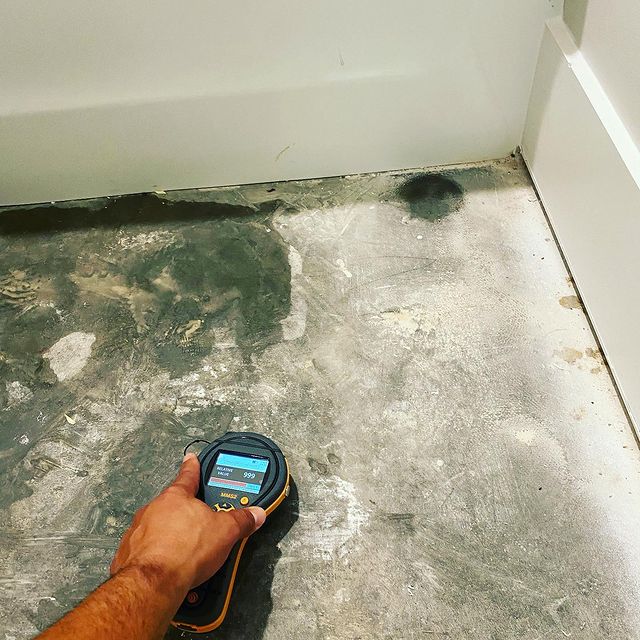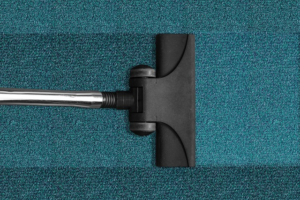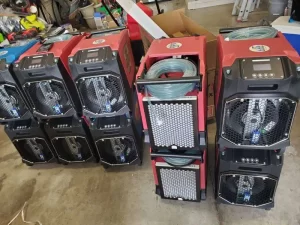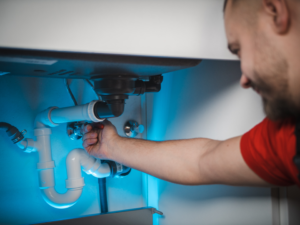Water damage is a common occurrence in households. If you’ve recently experienced flooding in your Tennessee home, you may wonder, ‘How long does it take for mold to grow on wet drywall?’ The answer is – not long. Mold can start growing within 12-24 hours if prevention measures aren’t taken quickly enough.
In this article, we will discuss exactly how to start preventing and removing mold on drywall to maintain a clean, healthy home even after extensive water damage.
Steps To Clean Wet Drywall to Avoid Mold Growth
Time is of the essence when cleaning up after a flood. Here are a few steps to take immediately following a flood:
Contact a Restoration Company
You have just a few hours to remedy a moisture issue to prevent a mold infestation, meaning one of your first phone calls should be to a professional restoration company.
There are many advantages to working with a professional following a flood. For example, restoration companies have professional-quality equipment, like HEPA vacuums and detectors. They also have the expertise you need to collect repair quotes and file an insurance claim.
Start Cleaning and Drying
Following water damage, cleaning and drying as quickly as possible is the best way to prevent spores.
Certain floods may require the services of a professional. Water intrusion can easily get stuck behind the walls and in the baseboards. Removing all damaged household materials and promptly cleaning and drying the affected area is essential.
Drywall is especially prone to spores, making faster drying a crucial step in your cleanup process. While air may help dry out some of the drywall, you may also have to remove and replace some pieces. Removing wet areas from a drywall surface is a step that is usually best left to the professionals.
Look For Visible Mold Spores
It’s crucial to schedule professional mold remediation services as quickly as possible if you notice any signs of growth. Left untreated, it can damage your home’s structure. It can also spread fungi into the air, leading to various allergy symptoms.
In some cases, mold and mildew look similar. Both, however, can cause household problems and health problems. Some types are also more dangerous than other types. Black mold, or Stachybotrys chartarum, is one of the most dangerous types.

It’s important to remember that it can take up to four weeks to become visible. Just because you don’t visually see any mold doesn’t mean it’s not present.
If you notice growth on your drywall, contact a professional immediately. It will quickly spread and start developing more spores.
Properly Ventilate the Room
Mold will continue growing until the thriving conditions are removed. After spore and growth removal, make sure you clean all items and promote airflow throughout the room.
What Causes Mold on Drywall?
Mold spores are present in most households. However, it takes the right environment and conditions for it to thrive. Because drywall is an extremely porous surface, it often grows mold in wet conditions. Other porous surfaces, like insulation, may also be at risk of mold.
The best way to remove mold growth once present is with the use of professional equipment.
How Fast Does Mold Grow on Drywall?
It can take as little as 24 hours for mold after exposure to high moisture levels. Once it grows, it will rapidly spread with each passing hour to nearby materials. The exact timeline varies, depending on the extent of water damage in your home, the ambient temperature of the home, the moisture levels, and the mold spore type.
Within two to four days, mold spores colonize and develop fresh spores. A single spore can quickly take over much of your drywall in a room. Once mold grows, it requires moisture to thrive, something very common in homes following leaks or floods.
How To Prevent Mold Spread After a Flood
Prevent spore spread after leaks or floods with the following tips:
- Control moisture. Ideally, your home’s level should be less than 45%.
- Contact a professional to begin restoration as soon as possible.
- Remove all affected drywall. Carefully remove all affected materials to avoid fungal contamination and mold.
- Quickly dry up flooded areas. One of the best ways to prevent mold is to dry up flood waters as quickly as possible.
Wet Drywall? Contact a Professional Today!
You have just a few hours to dry all wet walls to avoid mold.
Contact Flood Kings today to remediate and restore your home, ensuring it’s safe for you and your family following a flood.








